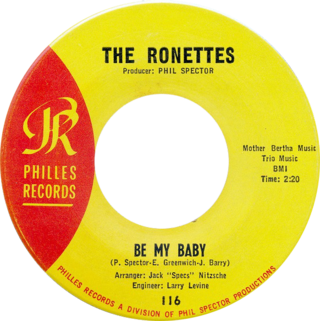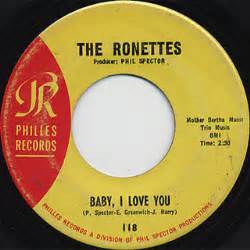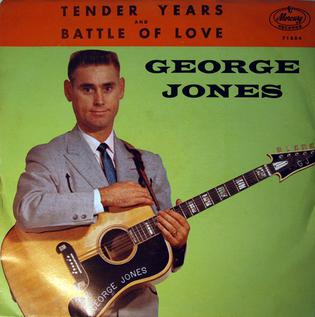
The Crystals are an American vocal group that originated in New York City. Considered one of the defining acts of the girl group era in the first half of the 1960s, their 1961–1964 chart hits – including "There's No Other ", "Uptown", "He's Sure the Boy I Love", "He's a Rebel", "Da Doo Ron Ron" and "Then He Kissed Me"– featured three different female lead singers and were all produced by Phil Spector. The latter three songs were originally ranked number 263, number 114, and number 493, respectively, on Rolling Stone magazine's list of The 500 Greatest Songs of All Time. However, two songs were omitted from the magazine's 2010 update, leaving only "He's a Rebel" at number 267. In the 2021 update, "Da Doo Ron Ron" was added back to the list at number 366.

"Do You Believe in Magic" is a song by American rock band the Lovin' Spoonful, written by John Sebastian in 1965. The single peaked at number 9 on the Billboard Hot 100 chart. In 1978, Shaun Cassidy reached the Top 40 with his cover version.

"Denise" is a song written by Neil Levenson that was inspired by his childhood friend, Denise Lefrak. In 1963, it became a popular top ten hit on the Billboard Hot 100 chart, when recorded by the American doo-wop group Randy & the Rainbows. A cover version by the American new wave group Blondie, re-titled "Denis", reached number 2 in the UK Singles Chart in 1978. Dutch actress and singer Georgina Verbaan covered "Denis" in 2002 and reached number 30 on the Dutch Singles Chart.

"Ramblin' Rose" is a 1962 popular torch song written by brothers Noel Sherman (words) and Joe Sherman (music) and popularized by Nat King Cole. The recording by Nat King Cole reached No. 2 on the Billboard Hot 100 chart in 1962.

"Be My Baby" is a song by American girl group the Ronettes that was released as a single on Philles Records in August 1963. Written by Jeff Barry, Ellie Greenwich, and Phil Spector, the song was the Ronettes' biggest hit, reaching number 2 in the U.S. and number 4 in the UK. It is often ranked as among the best songs of the 1960s, and has been regarded by some publications as one of the greatest songs of all time.

"Baby, I Love You" is a song originally recorded by the Ronettes in 1963 and released on their debut album Presenting the Fabulous Ronettes (1964). The song was written by Jeff Barry, Ellie Greenwich, and Phil Spector, and produced by Spector.

"It's My Party" is a song by American singer-songwriter Lesley Gore from her debut studio album I'll Cry If I Want To (1963). It was released as the lead single from the album on April 5, 1963, by Mercury Records. The song was collectively written by Herb Wiener, John Gluck Jr., and Wally Gold, while production was helmed by Quincy Jones.
"If I Were a Carpenter" is a folk song written by Tim Hardin in the 1960s, and re-recorded with commercial success by various artists including Bobby Darin, The Four Tops and Johnny Cash. Hardin's own recording of the piece appeared on his 1967 album Tim Hardin 2. It was one of two songs from that release performed by Hardin at Woodstock in 1969. The song, believed by some to be about male romantic insecurity, is rumored to have been inspired by his love for actress Susan Morss, as well as the construction of Hardin's recording studio.

"Break It to Me Gently" is a pop song written by blues musician Joe Seneca with lyrics by Diane Lampert. Both Brenda Lee and Juice Newton were met with considerable success with their versions of the song.

"Rhythm of the Rain" is a song performed by The Cascades, released in November 1962. It was written by Cascades band member John Claude Gummoe. On March 9, 1963, it rose to number 3 on the Billboard Hot 100, and spent two weeks at number 1 on Billboard's Easy Listening chart. Billboard ranked the record as the number 4 song of 1963.

"Then He Kissed Me" is a song written by Phil Spector, Ellie Greenwich and Jeff Barry. The song, produced by Spector, was initially released as a single on Philles Records (#115) in July 1963 by The Crystals. The lyrics are a narrative of a young woman's encounter, romance, and eventual engagement with a young man.

"The Ballad of Bonnie and Clyde" is a song, written by Mitch Murray and Peter Callander, and recorded by the British rhythm and blues musician Georgie Fame. Released as a single, the song reached number one in the UK Singles Chart for one week from 24 January 1968. The song reached number seven in the US Billboard Chart later the same year.

"(You're the) Devil in Disguise" is a 1963 single by Elvis Presley. It was written by Bill Giant, Bernie Baum and Florence Kaye and was published by Elvis Presley Music in June 1963. The song peaked at No. 3 in the US on the Billboard singles chart on August 10, 1963, and No. 9 on the Billboard Rhythm and Blues singles chart, becoming his last top ten single on those charts. The single was certified "Gold" by the RIAA for sales in excess of 500,000 units in the US. The song also topped Japan's Utamatic record chart in the fall of 1963. In June 1963, when the song was debuted to a British audience on the BBC television show Juke Box Jury, celebrity guest John Lennon voted the song "a miss" stating on the new song that Elvis Presley was "like Bing Crosby now". The song went on to reach No. 1 in the UK for a single week.

"Let's Twist Again" is a song written by Kal Mann and Dave Appell, and released as a single by Chubby Checker. One of the biggest hit singles of 1961, it reached No.8 on the U.S. Billboard pop chart in August of that year and subsequently reached No.2 in the UK in the spring of 1962. The song refers to the Twist dance craze and Checker's 1960 single "The Twist", a two-time U.S. No.1 single.

"Isn't It Time" is a song that was performed by the English group The Babys in 1977 and was released on their album Broken Heart.

Shaun Cassidy is the debut solo album by American singer Shaun Cassidy. The eponymous album was first released in 1976 in Europe and Australia, where he had top-ten hits with "Morning Girl" and "That's Rock 'n' Roll". It was not until the release of a cover version of The Crystals' song, "Da Doo Ron Ron", that Cassidy's international success carried over into the United States. The single became a number-one Billboard hit for Cassidy and launched his career as a pop musician and teen idol in the U.S.

"That's Rock 'n' Roll" is a song written and originally recorded by Eric Carmen in 1976. It became a popular Billboard top 10 hit in 1977 for teen idol Shaun Cassidy.

"Tender Years" is a song written by American country music artist George Jones and Darrell Edwards, recorded and released in 1961. It became Jones' second #1 country hit. The song also spawned two successful foreign language versions two years later in 1963, First in French by Johnny Hallyday, and in Dutch by singer and actress Willeke Alberti, being adapted from the former French version. Both versions have been covered by many others since.
"He Understands Me" is a song released in 1963 by Teresa Brewer. The song was a hit single for Johnny Tillotson in 1964, retitled "She Understands Me", and Bobby Vinton in 1966, retitled "Dum-De-Da".
This is the discography of American singer Shaun Cassidy.




















